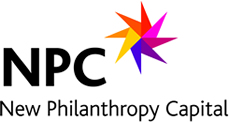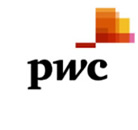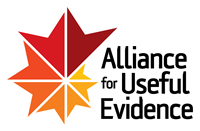With SIAA launched, is social impact at last becoming sexy?
Read the original article published on 5 December 2011 in Alliance Magazine
London on 1 December saw the long-awaited launch of SIAA, the Social Impact Analysis Association. The challenge for social impact analysis, said Jeremy Nicholls, chief executive of the SROI Network and a SIAA trustee, summing up at the end of the conference, is that social impact just isn’t sexy. Social innovation, yes; social enterprise, yes; anything with ‘social’ in the name, yes – except social impact.
But this autumn there have been five or six events on this issue in London alone, and a handful of new reports published. With social impact bonds leading the way on payment by results, government is now interested. With all this interest, we might get to a point where a CEO of a non-profit might say, ‘you know, we really didn’t create much impact there. Next time we will need to do something different.’
SIAA has come a long way in a short time. Two and a half years ago, in May 2009, the idea of an association of non-profit analysts was first mooted at a conference on ‘Valuing impact’. ‘My name is Martin Brookes and I’m a non-profit analyst,’ said Martin Brookes, then CEO of New Philanthropy Capital (NPC). ‘Not many people can say that and not many would understand it.’ The idea of SIAA came partly through reflection on the differences between the for-profit and non-profit spheres. Economists, risk experts and analysts in the for-profit world have qualifications and a right to speak about their subjects and be listened to. But there is no similar professional standard for analysis in the non-profit sphere. In November 2011, Andreas Rickert of Phineo, the German equivalent of NPC, was able to say ‘I don’t feel alone any more’. And there is no need for him to: SIAA now has around 75 members.
SIAA is a bit like a shell; what’s inside the shell has still to emerge. ‘It is up to you (the members) to make this organization,’ said Rickert. ‘The knowledge is in the room,’ said Martin Brookes. SIAA must be a member-led organization, he stressed.
Finding out what the members want was really what the SIAA launch conference was all about. Like the ‘Valuing impact’ conference before it, this was a conference with a goal. Whereas in 2009 the goal was to assess the appetite for an association for non-profit analysts, in 2011 the goal was to set the agenda for the newly formed association.
‘What is SIAA’s purpose?’ was the first question for after-lunch table discussions among conference participants. The table I was on felt the need for some definitions, particularly of the term ‘analysis’. ‘Analysis’ suggests measuring, evaluating, something done at the end of a process. But several people stressed the need for SIAA to avoid being the ‘impact Taliban’, assuming that any and every organization must be measuring impact. Is there a real difference between ordinary evalution and impact measurement? Is this a real attempt to produce better, more in-depth data or is it a matter of repackaging? The adoption of the name SIAA suggests that everyone knows what it stands for – but this is clearly not so.
Sir Stuart Etherington, chief executive of the NCVO, the National Council for Voluntary Organizations, stressed the need for impact to be central to the work of non-profits, not a bolt-on after the event. Social impact can become part of the way to lead an organization and motivate people, he said. ‘We’re not here to measure impact; we’re here to create it.’ He wondered if in future large non-profits would all have chief impact officers, whose role would be to ensure that impact is considered at every stage of the process.
Not that he underestimated the importance of measuring, of knowing what impact you are achieving. Charity trustees should know what they are trying to do and how they will know whether they are doing it, said Sir Stuart. Knowing what impact you are having is a ‘primary building block’ of governance. Making a difference is also highly motivating to staff, and knowing where they are making too little difference is a key job for senior managers.
Demonstrating impact can also attract more resources to organizations. The original NPC model was that the provision of good-quality data would attract new rational philanthropists, but philanthropists are not necessarily driven by rational behaviour, said Sir Stuart. Homo civicus rather than homo economist makes decisions about giving. But a report published on 30 November called Money for Good II suggests that if non-profits and information providers can give donors, advisers and foundation grantmakers the information they want, where and how they want it, these groups will be willing to shift $15 billion in charitable dollars to higher-performing non-profits. So perhaps there is life in homo economist and rational decision-making yet.
What next for SIAA? An afternoon of brainstorming in small groups provided a rich menu of tasks for the organization. Some were clearly for the long term – for example, creating a web forum for sharing approaches, evaluation designs and even evaluations across different countries. Others seemed more readily attainable. Tris Lumley of NPC was confident that principles/guidelines to cover measuring, analysis, reporting and using analysis could be drafted within a year.
Some issues for SIAA: who will pay for all this analysis? Will funders see it as their responsibility to ensure non-profits have the funds they need to do it? How can the views of beneficiaries be taken into account when assessing social impact? Will SIAA be an organization for sharing tools and good practices or will social impact analysis eventually become a formal profession with formal qualifications?
One thing that is clearly needed is awareness raising about the benefits – and limitations – of social impact analysis. Unless people are excited about the idea of SIAA, nothing will happen.
Caroline Hartnell is editor of Alliance.







+44 (0)207 438 2598
[email protected]
Follow us on Twitter
Join us on LinkedIn
Join us on Facebook
Our photos on Flickr
Subscribe to our Feed